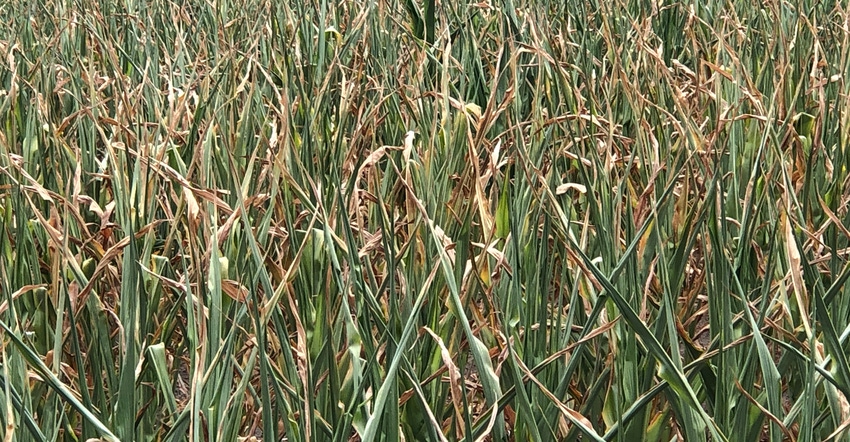
All but four of Minnesota’s 87 counties are now eligible for disaster assistance through the USDA Farm Service Agency’s emergency loan program.
The drought prompted USDA Sept. 1 to designate another 12 Minnesota counties as primary disaster areas, which opens an emergency credit program to affected producers. It also listed 17 contiguous counties as being eligible for the program. Emergency loans can be used for recovery, including the replacement of essential items such as equipment or livestock, reorganization of a farming operation or the refinance of certain debts.
FSA will review the loans based on the extent of losses, security available and repayment ability.
For production losses, a 30% reduction in a primary crop in a designated or contiguous county is required. Losses to quality, such as receiving a 30% reduced price for flood-damaged crops, may be eligible for assistance, too.
According to the U.S. Drought Monitor, the additional 12 counties suffered from drought intensity this growing season, ranging from severe to extreme to exceptional. The primary counties eligible are Aitkin, Anoka, Benton, Cook, Freeborn, Hennepin, Isanti, Lake, McLeod, Mille Lacs, Mower and Watonwan.
Contiguous counties also eligible are Blue Earth, Brown, Carlton, Carver, Cass, Chisago, Cottonwood, Fillmore, Itasca, Jackson, Kanabec, Martin, St. Louis, Scott, Sherburne, Sibley and Stearns.
Emergency drought declarations in neighboring states prompted additional Minnesota counties to be eligible. Those include Big Stone, Clay, Houston, Traverse and Wilkin.
The four Minnesota counties not listed as eligible are Goodhue, Rice, Wabasha and Winona.
Some rain helped
According to the U.S, Drought Monitor report released Sept. 2, there were widespread improvements in conditions across Iowa, Minnesota and Wisconsin in response to rainfall within the week. Totals in the region ranged from 2 to 12-plus inches.
Unfortunately, however, the Upper Midwest observed its 13th driest May-July period on record. Minnesota observed its second-driest July and May-July on record. Dry conditions in northern Minnesota were reportedly negatively impacting fish populations, wildlife and forest health.
For more information online about federal program assistance, go to on farmers.gov and view the Disaster Assistance Discovery Tool, Disaster Assistance-at-a-Glance fact sheet and Farm Loan Discovery Tool. To file a notice of loss or to ask questions about available programs, contact your local service center.
About the Author(s)
You May Also Like






